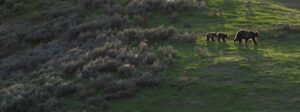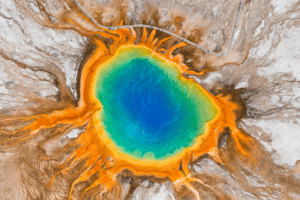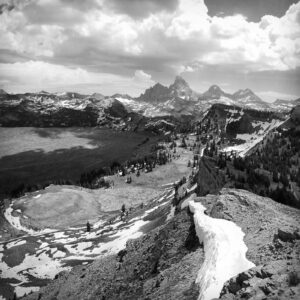The Best Way to Visit Yellowstone National Park: An Abbreviated Guide
Yellowstone National Park, a sprawling wilderness of geysers, hot springs, waterfalls, and wildlife, is the crown jewel of the American West. Straddling Wyoming, Montana, and Idaho, this iconic park offers 2.2 million acres of jaw-dropping scenery and unforgettable experiences. But with its vast size and millions of visitors each year, knowing the best way to explore Yellowstone can make the difference between a trip that’s chaotic and one that’s truly magical.
Here’s a guide on the best way to visit Yellowstone National Park, whether it’s your first time or your tenth.
1. Plan Ahead – Way Ahead
Yellowstone’s peak season runs from June to early September, and lodging inside the park can book up a year in advance. If you want to stay within the park or at one of the gateway towns like West Yellowstone or Gardiner, reserve accommodations as early as possible.
Pro tip: If you’re visiting in the shoulder seasons (late spring or early fall), you’ll enjoy fewer crowds and a more peaceful experience, but be prepared for unpredictable weather.
2. Choose the Right Entrance
There are five entrances to Yellowstone:
-
- West Entrance (West Yellowstone, MT): Most popular, closest to geysers.
-
- South Entrance (Jackson, WY): Best if you’re combining with Grand Teton.
-
- East Entrance (Cody, WY): Great scenic drive, rich in Old West history.
-
- North Entrance (Gardiner, MT): Open year-round; closest to Mammoth Hot Springs.
-
- Northeast Entrance (Cooke City, MT): Least used; closest access to Lamar Valley.
Best choice: For first-timers, the West Entrance offers quick access to the geyser basins and Old Faithful, making it an ideal starting point.
3. Break the Park into Regions
Trying to do Yellowstone in one day is like trying to tour Europe in a weekend. The park is massive and diverse, so the best strategy is to break it down into manageable regions:
-
- Geyser Country (Upper, Midway, and Lower Geyser Basins): Old Faithful, Grand Prismatic Spring.
-
- Canyon Country: Grand Canyon of the Yellowstone, Artist Point, Hayden Valley
-
- Lake Area: Yellowstone Lake, West Thumb Geyser Basin.
-
- Mammoth Country: Mammoth Hot Springs, Roosevelt Arch, Blacktail Plateau, Hellroaring
-
- Lamar Valley: From Roosevelt to Cooke City – Prime wildlife viewing, often called the “Serengeti of North America.”
Spend at least 4–5 days if you want to explore the major areas without rushing.
4. Start Early, Stay Late
Yellowstone’s popularity means parking lots at major attractions fill up by mid-morning. Start your day early (before 6 a.m.) to avoid crowds and increase your chances of seeing wildlife, which is most active at dawn and dusk.
Pro Tip: My favorite method for visiting the park is to head in either very early (5AM) and position myself near Slough Creek, close to Lamar Valley and be in place for sunrise. This has resulted in some of the most amazing encounters, with no crowds. You can reverse this process by entering the park at 4:00 PM in the summer months, and be in place in the Lamar Valley or Hayden Valley for Sunset. Low crowds, amazing wildlife encounters and scenery that will lodge in your memory forever.
5. Don’t Just Drive – Get Out and Hike
While the Grand Loop Road offers access to all major attractions, some of Yellowstone’s most beautiful spots are only accessible on foot. Consider these moderate hikes:
-
- Fairy Falls Trail: Great views of Grand Prismatic Spring.
-
- Uncle Tom’s Trail: Staircase descent into the canyon.
-
- Lamar River Trail: Fantastic for bison, wolves, and solitude.
-
- Mary Mountain Trail: Right on the edge of Hayden Valley, bring bear spray!
6. Be Prepared for Wildlife – and Respect It
Yellowstone is home to bears, wolves, elk, bison, and more. Always keep a safe distance (100 yards from bears/wolves, 25 yards from other animals), and never approach or feed wildlife.
Bring bear spray and know how to use it, even when hiking short distances. Bears have been known to utilize boardwalks at sone of the thermal features, and you may encounter wildlife anywhere in the park. Give them all space to be wild!
7. Bring Layers and Essentials
Weather in Yellowstone can change fast. A sunny 70°F afternoon can become a rainy, 40°F evening. I have experienced snowfall every month of the year in Yellowstone. Pack:
-
- Warm layers, rain gear, and sunscreen
-
- Water, snacks, and a cooler
-
- Maps (cell service is spotty)
-
- Binoculars or a spotting scope for wildlife
-
- Bear Spray!
8. Consider a Guided Tour
If you prefer not to drive or want expert insights, consider a guided tour—by van, bus, or even snowcoach in winter. The wildlife professionals are connected and communicate with each other, offering you a better chance to see the wildlife that makes the Greater Yellowstone Ecosystem special.
9. Combine with Grand Teton National Park
If time allows, combine your trip with Grand Teton National Park, just south of Yellowstone. It’s only an hour’s drive from the South Entrance and offers stunning alpine scenery, fewer crowds, and excellent hiking. The wildlife watching can be extraordinary in the Tetons, and offers some of the best Grizzly viewing opportunities in the region.
10. Leave No Trace
Lastly, be a good steward of the land. Stay on boardwalks in geothermal areas, pack out trash, stay on designated trails, and be respectful of other visitors. Yellowstone is a treasure—help keep it that way for generations to come.
Final Thoughts
The best way to visit Yellowstone National Park is to slow down, savor each unique landscape, and allow nature to set the pace. Whether you’re marveling at Old Faithful, hearing the call of a wolf in Lamar Valley, or watching the sunset over Yellowstone Lake, the park rewards those who take the time to truly experience it.
Adventure awaits. Let Yellowstone change you.




